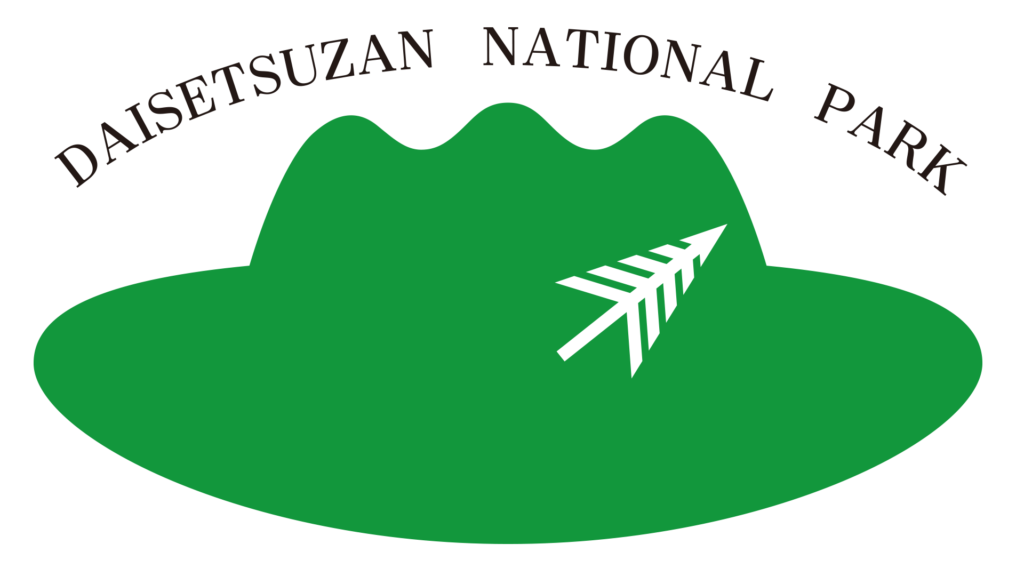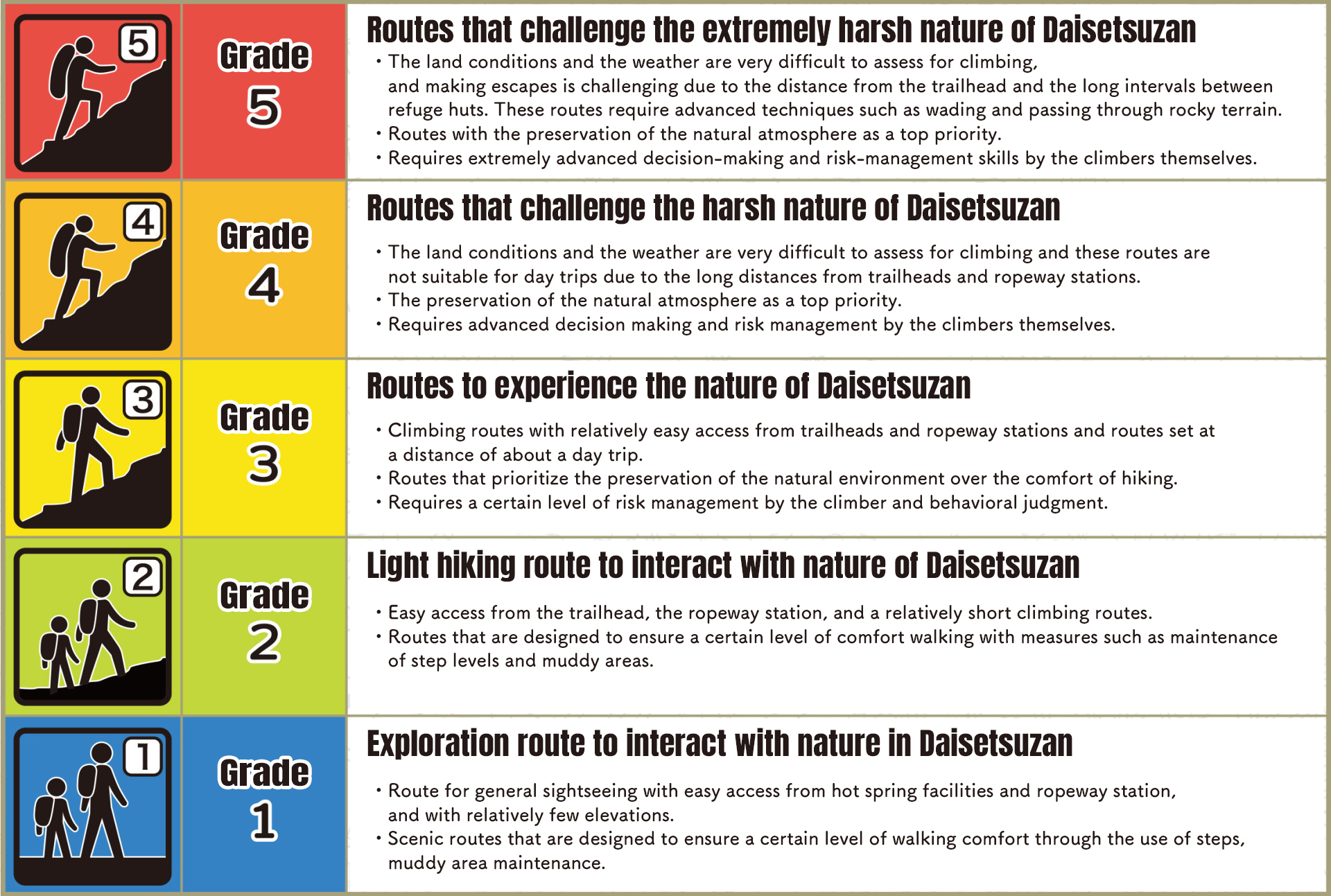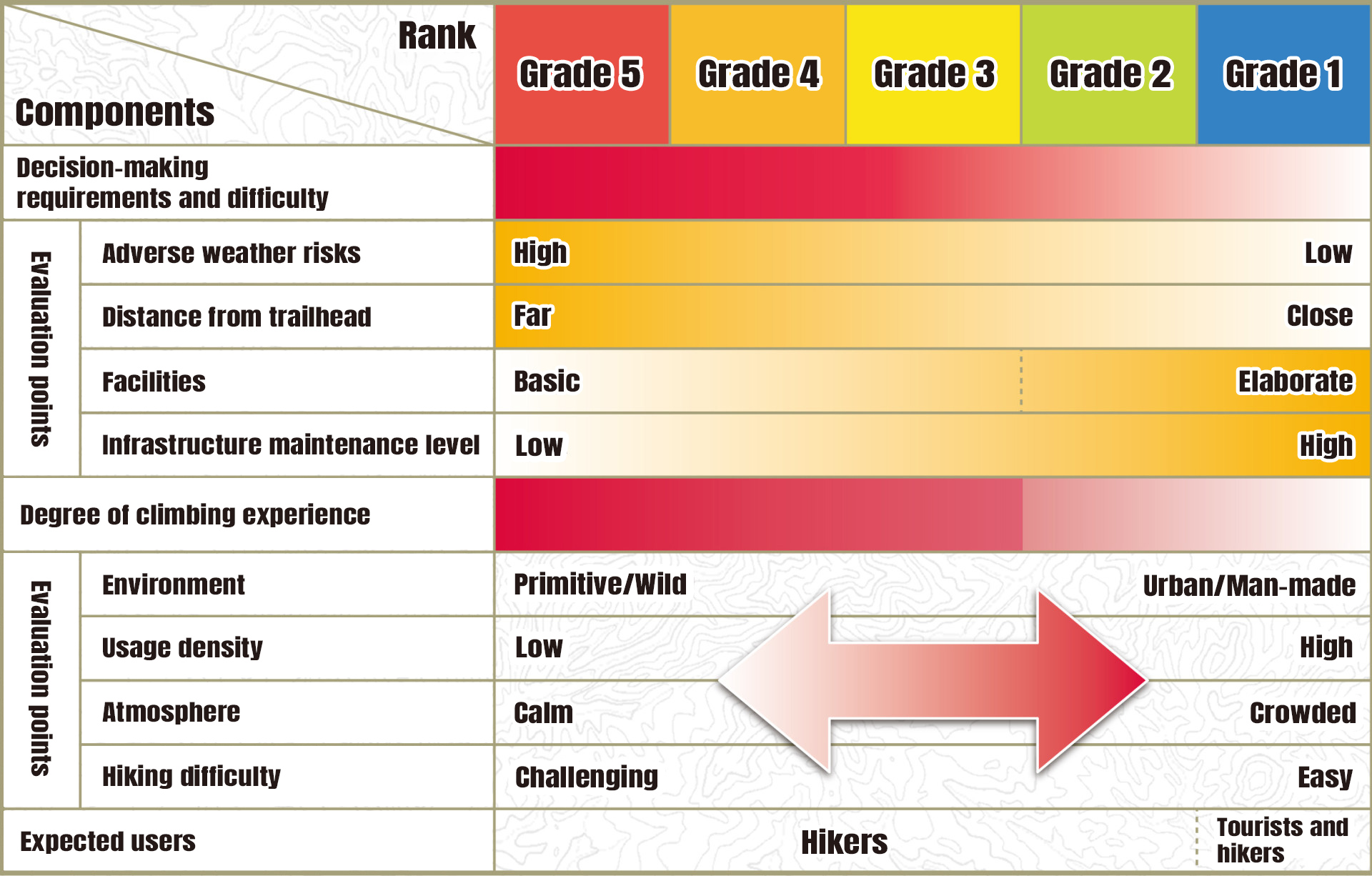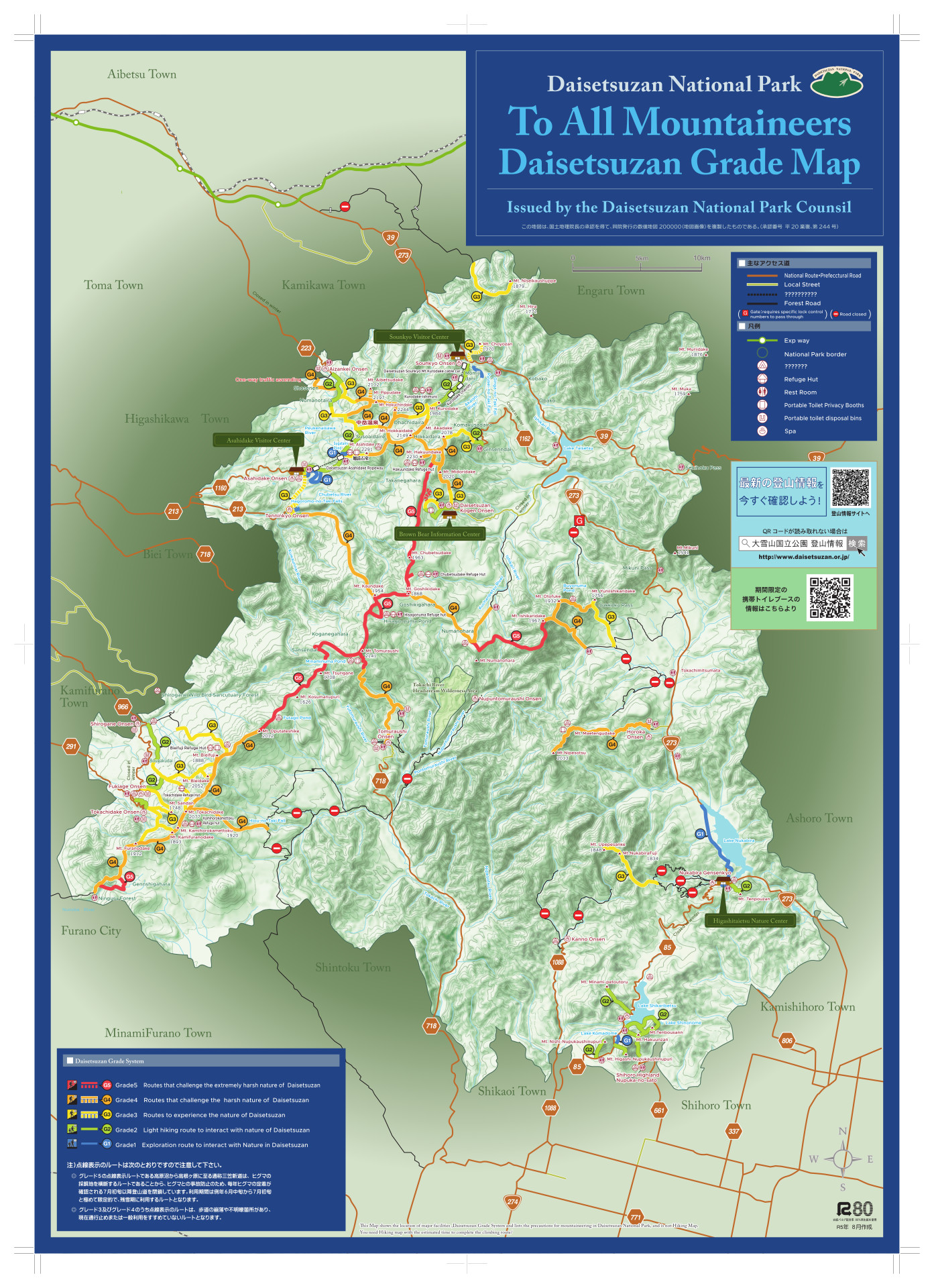
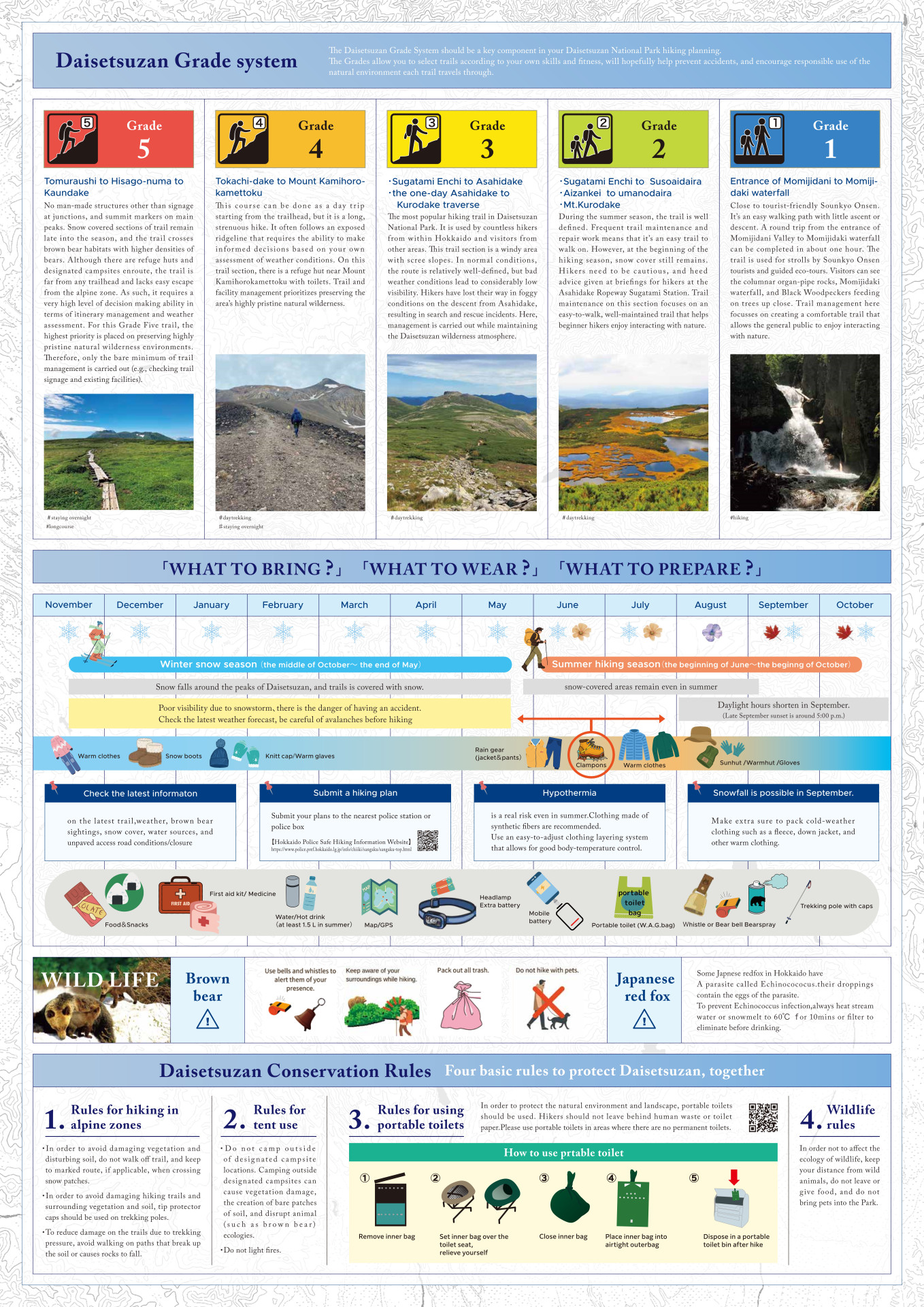
The Daisetsuzan Grade System
In total, there is approximately 300 km of hiking trails in Daisetsuzan National Park. Each trail section is different. Natural environments and location within the park differ, for example their distance from trailheads and the presence of huts and other facilities. Trail sections can also differ in their degree of difficulty and favour of experience gained from hiking them.
In Daisetsuzan National Park, each hiking trail section belongs to one of five levels, from Grade 1 to Grade 5. These grades primarily encompass two interrelated factors: 1) the degree of personal risk management required (decision-making difficulty and complexity), and 2) the natural environment to be expected (e.g. wilderness extent, remoteness, access etc).
Trail maintenance and restoration of each section of trail is carried out in keeping with those five Daisetsuzan Grades, working to maintain the Park’s characteristic natural environment and atmosphere.
The Daisetsuzan Grade System should be a key component in your Daisetsuzan National Park hiking planning. The Grades allow you to select trails according to your own skills and fitness, will hopefully help prevent accidents, and encourage responsible use of the natural environment each trail travels through.
Some trail sections are not graded. These are trails where trailhead access roads are closed or are trails that are no longer maintained or are currently closed.
Daisetsuzan Grade example
Grade 5: Tomuraushi to Hisago-numa to Kaundake

The Grade Five trail section from Tomuraushi to Kaundake via Hisago-numa is the least developed trail in Daisetsuzan National Park, with no man-made structures other than signage at junctions, and summit markers on main peaks. Snow covered sections of trail remain late into the season, and the trail crosses brown bear habitats with higher densities of bears. Although there are refuge huts and designated campsites enroute, the trail is far from any trailhead and lacks easy escape from the alpine zone. As such, it requires a very high level of decision making ability in terms of itinerary management and weather assessment. For this Grade Five trail, the highest priority is placed on preserving highly pristine natural wilderness environments. Therefore, only the bare minimum of trail management is carried out (e.g., checking trail signage and existing facilities).

Daisetsuzan Grade example
Grade 4: Tokachi-dake to Mount Kamihorokamettoku


Daisetsuzan Grade example
Grade 3: Sugatami Enchi to Asahidake

This Grade Three section of trail is the most popular hiking trail in Daisetsuzan National Park – the Asahidake summit hike, Susoaidaira Loop, the one-day Asahidake to Kurodake traverse, all of these hikes use this section of trail. It is used by countless hikers from within Hokkaido and visitors from other areas. This trail section is a windy area with scree slopes. In normal conditions, the route is relatively well-defined, but bad weather conditions lead to considerably low visibility. Hikers have lost their way in foggy conditions on the descent from Asahidake, resulting in search and rescue incidents. Here, management is carried out while maintaining the Daisetsuzan wilderness atmosphere.

Daisetsuzan Grade example
Grade 2: Sugatami Enchi to Sosoaidaira

This Grade Two section of trail is used for the Sugatami Enchi to Susoaidaira round trip, as well as a descent option from the Asahidake summit, and the traverses from Kurodake and Aizankei. During the summer season, the trail is well defined. Frequent trail maintenance and repair work means that it’s an easy trail to walk on. However, at the beginning of the hiking season, snow cover still remains. Hikers need to be cautious, and heed advice given at briefings for hikers at the Asahidake Ropeway Sugatami Station. Trail maintenance on this section focuses on an easy-to-walk, well-maintained trail that helps beginner hikers enjoy interacting with nature.
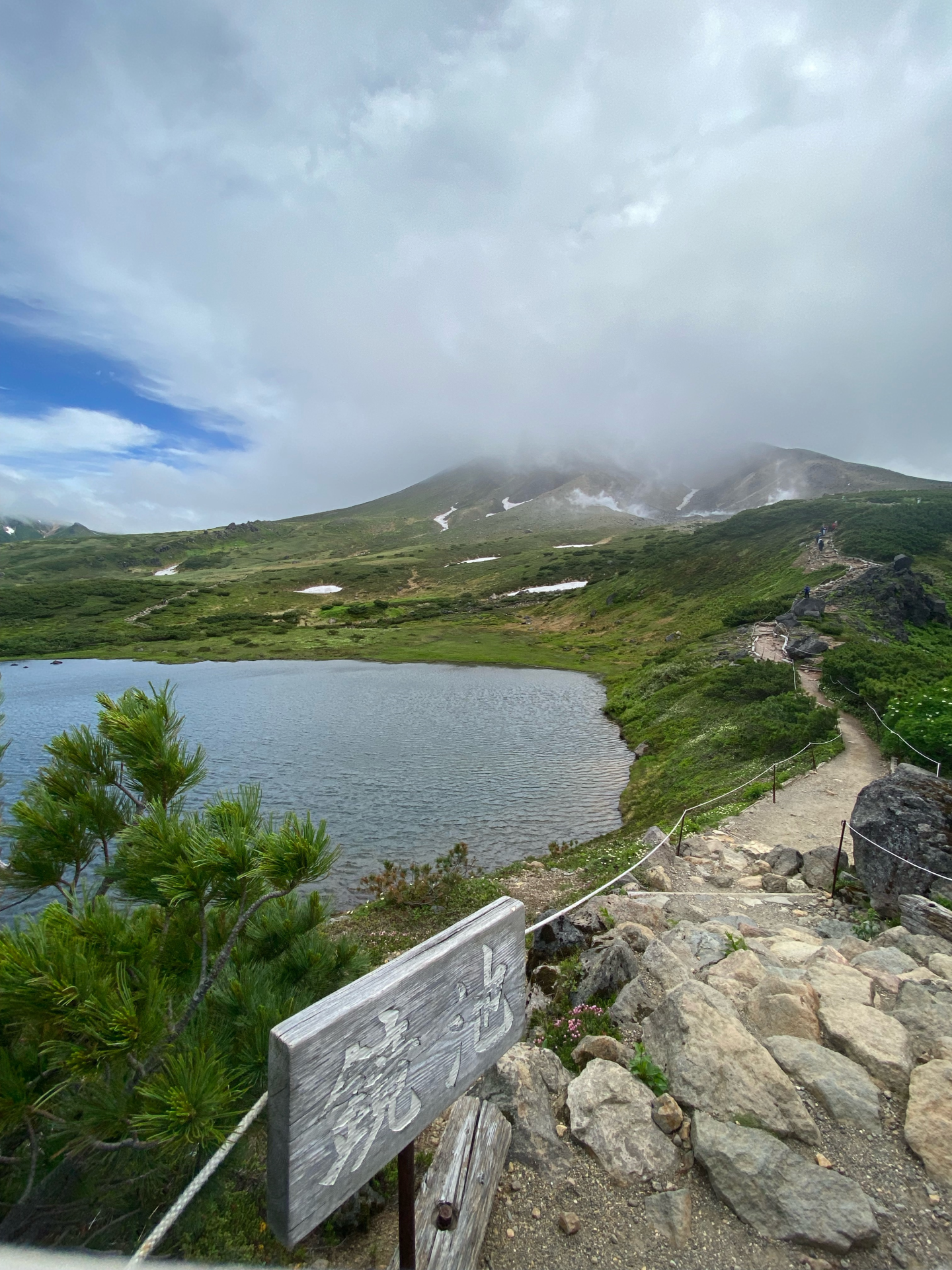
Daisetsuzan grade example
Grade 1: Entrance of Momijidani to Momijidaki waterfall

This Grade One route is close to tourist-friendly Sounkyo Onsen. It’s an easy walking path with little ascent or descent. A round trip from the entrance of Momijidani Valley to Momijidaki waterfall can be completed in about one hour. The trail is used for strolls by Sounkyo Onsen tourists and guided eco-tours. Visitors can see the columnar organ-pipe rocks, Momijidaki waterfall, and Black Woodpeckers feeding on trees up close. Trail management here focusses on creating a comfortable trail that allows the general public to enjoy interacting with nature.

